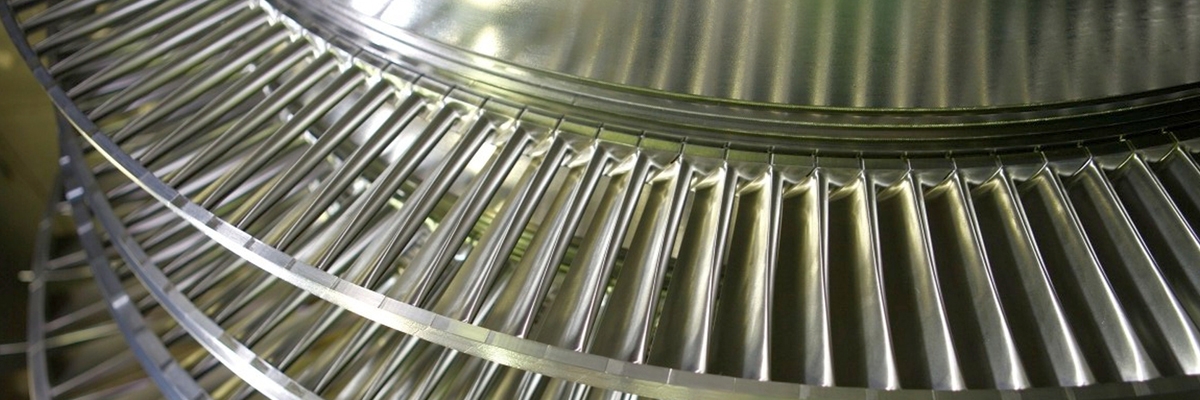A quarter of the world’s power production capacity depends on Alstom
For more than a hundred years, Alstom has been providing innovative solutions to meet the constantly growing global demand for electricity. Every year, Alstom builds several turnkey power plants of different technologies around the world. It also renovates, modernises and maintains existing plants to increase their efficiency and reliability. Supporting the company’s drive for manufacturing efficiency gains and improvements is CGTech’s VERICUT independent CNC simulation and optimisation software.
Alstom’s technologies generate electricity equivalent to the needs of around 1.2 billion homes. From gas to wind, its customers can choose from a portfolio of products covering all fuel types, one of the broadest in the industry. From design, manufacture, procurement, construction and servicing, it has been setting the benchmark in clean, efficient, flexible and integrated power generation solutions for over a century.
The company’s power generation systems use cutting-edge technology for deployment around the world, which include state-of-the-art turbine rotors for steam and gas fuelled stations. The gas and steam turbine rotor manufacturing process employs Alstom’s unique welding technology. The forged rotor sections are machined, inspected and then automatically welded together. This technique is bespoke to Alstom. It ensures high integrity and maintenance-free rotors, but most importantly reduces weight by including defined cavities. Thanks to the reduced weight, the rotors reach their operating temperature faster and are less exposed to material stresses when cooling down. Overall, this allows a more flexible plant operation according to the necessary power load to be produced.
After ultrasonic testing and alignment, the rotor is mechanically machined in two stages: first the rotor is turned to measure on a large lathe, and then it is drilled and milled on the Turbine Advanced Production System (TAPS). After seals and blading are mounted, the finished rotor is balanced and undergoes an over-speed test.
Generating tool paths for turbine blades can be one of the more complex tasks for NC programmers. With as many as 40,000 lines of NC code required to mill the blade surfaces to the exact tolerances required, programming and proving-out the data can be a daunting task. Alstom Power Stromerzeugung GmbH decided to change its machining strategy for manufacturing turbine blades in order to improve its part accuracy. In business since 1900, the Nuremberg-based company makes blades for steam and gas turbines. Alstom Power Stromerzeugung, together with the other global businesses within the Alstom conglomerate, employs around 85,000 people worldwide.
Alstom switched from multi-spindle to single-spindle machining and invested in five modern Huron machining centres that are networked together with each machine controlled by a Siemens Sinumerik-840D CNC system. “The machining process with one spindle is easier than with multiple spindles,” explains engineer Rainer Pfeufer. “And, as we are doing short runs, the production of small quantities is more effective with one spindle.”
Changing machining strategies also presented an opportunity to improve the NC programming process. Part of that change included the evaluation of a new NC verification solution. Engineers at Alstom use CATIA software for CAD activities. All CAM functionality, measurement, and quality control are handled by internally developed software. After selecting VERICUT for third-party verification, each NC programmer attended two days of basic training where they experienced first-hand the type of results they could expect to achieve. “That provided quite a bit of motivation for working further with the system,” says Rainer Pfeufer.
Blade production remained in full swing during the implementation of VERICUT into Alstom’s manufacturing environment. The results were almost immediate. Previously the programmer was required to check the program to the best of their knowledge, then test on the machine, correct, and retest. Now, with the ability to test in a virtual environment, they found that they could decrease the time necessary for preparing a production-ready NC program. “Depending on the machining task, we can reduce the part programming time by 5 to 10 per cent,” says Rainer Pfeufer, “a considerable productivity gain.”
Additionally, safety is increased as potential collisions between tool, fixture, workpiece and machine components are recognised in advance. Software simulation has also helped improve the quality of the company’s NC programs, says Pfeufer. “With simulation, you can determine the best processing strategies. Several alternatives can be compared in an acceptable time frame – this was not possible in the past without VERICUT.”
But the real productivity gain was evident on the shopfloor. Because programs are quickly and easily tested on the computer, Alstom was able to dramatically reduce the prove-out cycle. “Setting up jobs is now much faster than before, typically we need just half the time. The programs can be very easily tested with VERICUT. Unnecessary motions are found quickly so they can be avoided.”
The engineers also gained productivity during production machining. In the past, NC programmers did their best to achieve good feed rates based on their experience. But with between 20,000 to 40,000 lines of code per NC program it was just not practical. “Now, with the optimisation capability of the software, the feed rates are selected automatically and the cutting conditions are calculated depending on the actual geometry.” According to Rainer Pfeufer, Alstom is now saving 10 per cent on its overall machining time as a result of the improved feed rates. “Also, the programmer’s time can be much better spent,” he confirms.
Because of the success with VERICUT, the entire department has embraced the software and it has become an indispensable part of the department’s programming tools. “The real evidence of that,” says Rainer Pfeufer, “was when one of my colleagues, Horst Sauer, said to me, ‘Now, I couldn’t live without it.’”
 Germany
Germany Italy
Italy USA
USA South Korea
South Korea UK
UK India
India France
France China
China Japan
Japan
